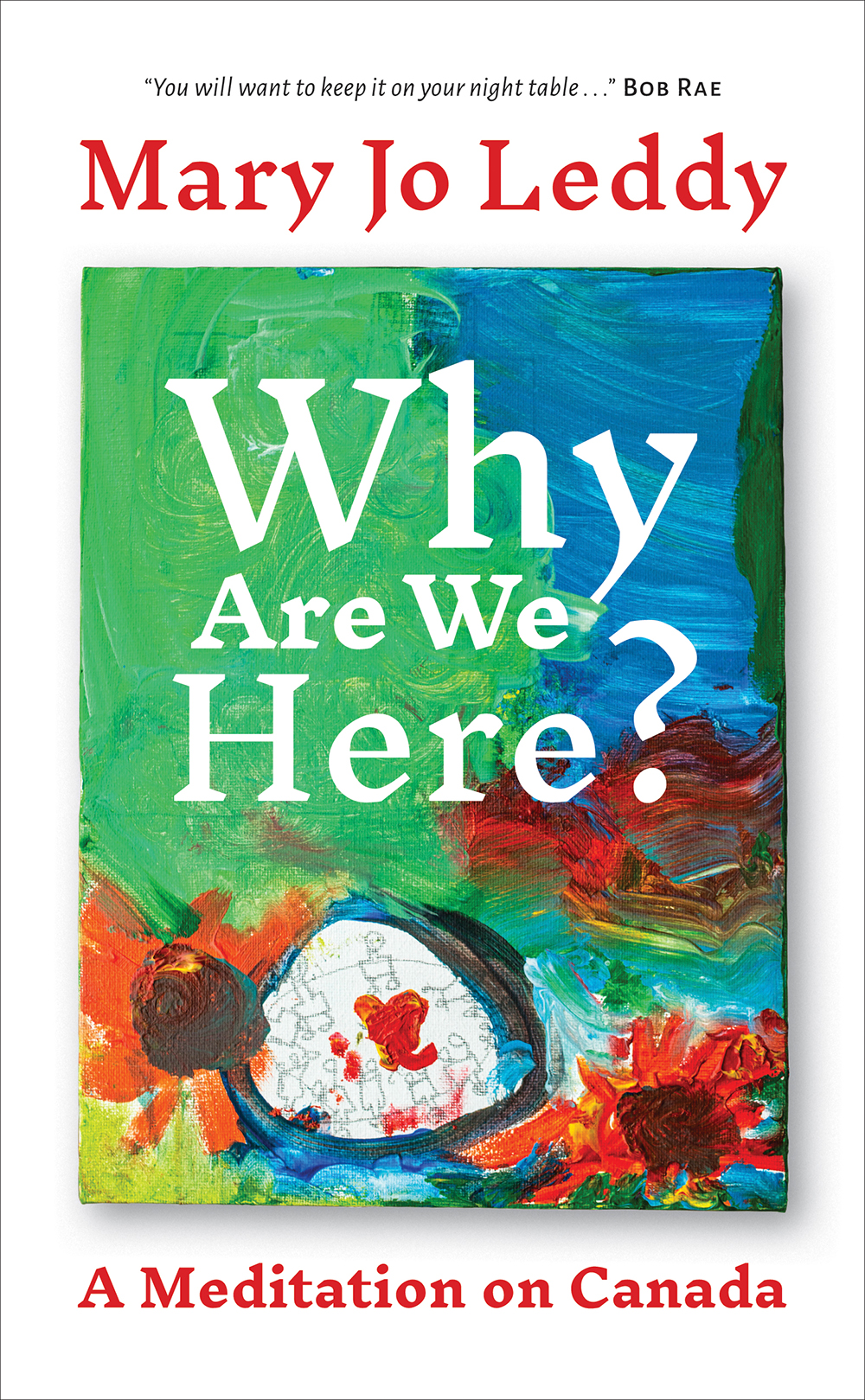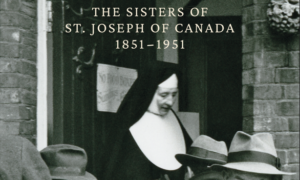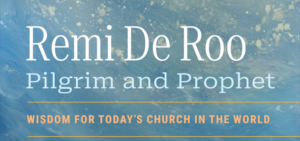
WHY ARE WE HERE?

Mary Jo Leddy’s book Why Are We Here? A Meditation of Canada takes its title from the question of a Tsimshian chief to an explorer first arriving on the shore of the Pacific northwest coast. This book addresses our struggles with our history, our current challenges and our emerging future as Canadian people. It is a must read for discussions about race, diversity, equity and inclusion, environmental activism and concerns for the future of this beautiful country. I must begin this review by making my own connections to what Mary Jo Leddy presents in Why Are We Here? A Meditation on Canada.
In the early 80s, I took a course at York University entitled “The Canadian Experience.” This course has stood out for me as a monumental moment in my understanding of our quest to define our culture as Canadians. The professor was a former Jesuit priest. His approach to the study of Canadian literature was so engaging that it left you wondering about the essence of what it truly means to be Canadian. One lecture in particular was like no other I have experienced. He titled this presentation “Where is North?” He outlined the many ways that Canadians use the term “north” as a framework of identity throughout Canadian literature. All three hundred students gave him a standing ovation.
This brings me to Leddy’s book. She presents us with a way of seeing the potential of our country as well as coming to terms with the shadows of colonialism. She reminds us that the beginnings were tinged with light and shadow, sin and grace. Her assertions are woven through references to Canadian literature, music, politics and significant events such as the death of Gord Downey or the support of the Newfoundland and Labrador community to Americans on the crisis of 911. In these times of our Truth and Reconciliation journey, she calls us to see that the question of the Tsimshian chief “Why are you here?” is not about owning land. It is about community and responsibility in caring for each other and the beauty of creation with which we are surrounded.
As the author explains, our failed relationship with the Indigenous people is the original flaw or sin in the beginnings of this country. We have missed the opportunity to learn how to be in relationship with the environment. Instead, colonialism led us to a consumer driven, dominating approach to the land. Today, through our experience of the Covid-19 pandemic and the Black Lives Matter movement, we see the deep questions and discernment that we must face as a nation. Systemic racism is in our institutions, our symbols, our regional garrisons and our history. Leddy asks: “Who are the victims in this colony?”
In the first chapter of the book, we are presented with the image of newcomer children jumping off a rock into a lake in northern Ontario. As the founder of Romero House, Leddy has walked with refugees and new Canadians and witnessed their gratitude for the “gracious splendour” of their new home. In seeing Canada through the eyes of the refugees at Romero house, Leddy explains that she began to understand Northrope Frye’s assertion that those who live in a colony must begin with the question “Where is here?”
Leddy gives concrete reasons for these questions. When we begin with the history of this place from the perspective of here, rather than the perspective of the empire, this can help to find significance and meaning in this particular time in history. As I described in the paragraph about the lecture “Where is North?” Leddy examines the trap of falling into myths and innocence to define who we are as Canadians. This does not help our nation come to terms with the shadows in our history. We are a young nation, and thus we find it challenging to integrate our history from the perspective of here and now, rather than a colonial perspective. This makes me think of studying history in Grades 7 and 8. The textbook photos depicted the explorers in all their majesty at the front of the canoe, with the Indigenous guide paddling at the back! As I remember studying history, this is the only perspective we had-the European guy at the front of the canoe.
Leddy has given such rich phrases and anecdotes to illustrate that culture is dynamic, regional and always changing. She describes that as Canadians, we have a habit of deferring to the head office. This book gives us a call to take responsibility for our country by beginning at the local level. Leddy cites the writing of Margaret Atwood and her claim that our unifying symbol is “survival.” European settlers were dependent on the Indigenous people to show them how to survive in such a cold, rugged land. This symbol of survival has perpetuated and has caused a garrison mentality, defining ourselves by who we are against, or from whom we must be protected.
The succeeding chapters present a positive and hopeful alternative to the colonial, dependent mindset that has framed our thinking and identity. Gratitude for the beauty of this place and a celebration of the wisdom of the Indigenous people in their relationship with the land needs to be acknowledged. Our common good is connected to the place. If we could stop and listen, we would see that all we need is here. As Leddy articulates, this place is blessed. It is “big and cold, but it also warms with a future, a promised land where new things seem possible.”
The pages of my copy of Why are We Here? is littered with my thoughts as I will continue to reflect on the many ideas that Leddy has put forward about the place where I live. She has provided me with language to respond to my own struggle with the trap of “colonial” thinking. Imagine that we are called to a “spiritual spaciousness.” I align this with the call to a more healthy relationship with creation, given by Pope Francis in Laudato Si. The time has come to see that we, human beings, are not at the centre of the universe. Leddy describes this as our need to find our way back to an original moment. The lyrics of Joni Mitchell come to mind: “We are stardust, we are golden and we’ve got to get ourselves back to the garden.”
The concluding chapter is entitled “What are We For?” This is such an appropriate question for all of us in the Catholic community, as well as the community of Canada. We hold the land in common; it is our most precious gift and is crying for us to take responsibility. The fate of the earth will define our future. As citizens, we can act and take responsibility locally, while thinking globally.
Why Are We Here? A Meditation on Canada is a book that can help us to discern the times we are in. It is a commentary on our past, but more importantly, a prophetic call to a future of hope. I thoroughly enjoyed this book and appreciated the clarity and depth of the messages it provides. Leddy leads the reader through a meaningful and timely meditation from the perspective of new refugees and from the Tsimshian chief.
“Why are we here? We are here to take up responsibility for this place on earth, for the sake of the whole earth.” May Canadians move closer to this call to the good that we hold in common.
–Jan Bentham is a Retired Religion Coordinator with the Ottawa Catholic School Board. She is a musician, serving in music ministry at St. Ignatius Parish in Ottawa. She currently works at St. Paul’s University with the Catholic Women’s Leadership Program.


